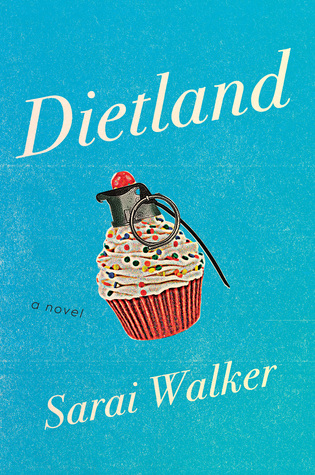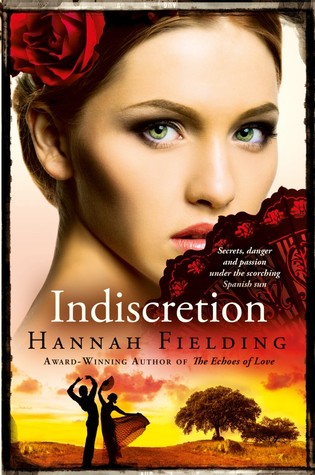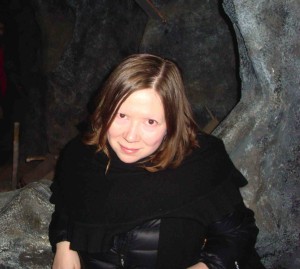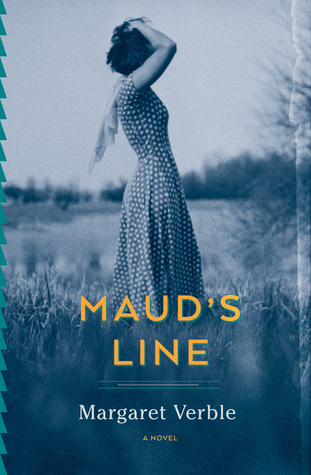 Set in Los Angeles in 1928, Rule of Capture finds Ohio court officer and civic trailblazer Sarah Kaufman at the trial of C. C. Julian, a suave huckster who knowingly over-issued stock in his petroleum company. Swindling thousands out of their savings, Julian and his cohorts were notorious in their day, and as one of their victims, Sarah is in the city to see that justice is served. But when a former acquaintance, the beautiful Rita Fuentes Bradford, is murdered, Sarah finds herself drawn into a search for Rita’s killer.
Set in Los Angeles in 1928, Rule of Capture finds Ohio court officer and civic trailblazer Sarah Kaufman at the trial of C. C. Julian, a suave huckster who knowingly over-issued stock in his petroleum company. Swindling thousands out of their savings, Julian and his cohorts were notorious in their day, and as one of their victims, Sarah is in the city to see that justice is served. But when a former acquaintance, the beautiful Rita Fuentes Bradford, is murdered, Sarah finds herself drawn into a search for Rita’s killer.
Plunged into a tense, ethnic tug-of-war between the Jewish and Mexican communities in the “melting pot” of early L.A., Sarah becomes involved with the handsome and powerful Carlos Martinez, a Chicano man both living the American Dream and engaged in subversive activity. While the relationship between Sarah and Carlos heats up, Sarah’s lover, journalist Mitchell Dobrinski, decides to visit Los Angeles to report on the trial and keep an eye on Sarah. But Mitchell gets more than he bargains for, learning not only of Sarah’s infidelity, but her discovery of a cover-up that threatens to break the city at the seams. Laced with historical details from 1920s Los Angeles—when oil was booming, Hollywood was young, and Tijuana was the frontier—the story also shines a light on the ruling class corruption and ethnic prejudices that continue to this day. In providing a tantalizing glimpse into Southern California’s past, Rule of Capture holds a mirror up to its present.
Like the highly-praised O’Brien’s Desk and The Natural Selection, Rule of Capture is a rich, layered narrative that challenges simple assumptions of right and wrong. It is a must-read for historical mystery lovers who crave evocative details, engaging characters, and sociological themes that center on race, class and gender, particularly on the power these categories confer or deny. Masterfully written and researched, Rule of Capture introduces readers through actual courtroom testimony to the individuals behind the once infamous C. C. Julian oil scandal, while drawing us back into the world of Sarah Kaufman and her unending quest for justice.
“Los Angeles is a city of contradictions,” said Russell, “built on optimism and despair, settlement and displacement. It is a city of dreams and nightmares, renewal and dissolution, tolerance and bigotry. And as many writers before me have discovered, it is a city of hidden crimes, and thus a ripe setting for a mystery. It is one of the darkest of these crimes that forms the basis of my story and that teaches my protagonist—a real historical figure who I adopted as my fictional sleuth—that a victim of injustice can also be a victimizer.”
***
1. Rule of Capture is a legal mystery that takes place in Los Angeles in the 1920s. What inspired you to write a historical novel set in that time and place?
As for the era, it really found me. I situated the story in the 1920s because I was led there by the news clippings that formed the basis of my first book. After becoming fascinated with the period in general, however, especially after realizing how similar it was to our own time, I decided to stay there. Los Angeles was another matter. In trying to figure out the setting of my next book—I had initially planned a series that would include every state in the Union!—I came across a little known but incredibly important court trial held in L.A. in 1928. This led to other discoveries that I thought could provide interesting plot twists. Plus, my grandfather owned a shoe store in L.A. that I decided to weave into the narrative. Also, I was born in L.A, my daughter and parents live in the city, and it was a relatively close place to do research. So, voilà! Los Angeles!
2. Like Rule of Capture, your first two novels, O’Brien’s Desk and The Natural Selection, feature a real person, juvenile social worker and counselor Sarah Kaufman, as their heroine. What’s special about Sarah and how did you come to choose her as the star sleuth for your mystery series?
I was introduced to Sarah while doing research for O’Brien’s Desk. O’Brien was my husband’s grandfather and a prominent judge in 1920s Ohio. He frequently appeared in newspapers of the day, accompanied by his court appointee, Sarah Kaufman. I was immediately struck by Sarah, a Jewish woman who had made a name for herself in a male-dominated and gentile environment. She was a working professional at a time when few women left the home and a civic leader involved in all sorts of Progressive causes. But she also lived with her siblings, never married, and was an aspiring writer. This gave her a complexity that I thought could be developed. The more I read and imagined, the more convinced I became of her fictional possibilities. As a Jewish woman myself, I identified with her, so much so that I laid flowers on her grave to thank her for inspiring me. In life she was a crusader for justice; in fiction she’s the same. And I’m proud to say that as a result of my first book, she (the real Sarah Kaufman) was inducted into the Toledo Civic Hall of Fame.
3. There are strong elements of feminism and civil rights, especially with regard to religion and race, in all of your novels. What made you decide to pursue these thematic issues in your historical series and in this new novel?
Well, I’d have to say that it’s a combination of personal experience, education and history. I come from a family that values diversity and human rights. I approach the world from this perspective, and when I encounter opposition, I react. With respect to religion in particular, I’ve experienced my fair share of intolerance, and my reaction has taken many forms, including writing. Writing is for me a way to work through these experiences, to lay them bare and alter the narrative to my liking. Since the 1920s saw the rise of the KKK and all manner of bigotries, it’s natural, given my bent, that I would be drawn to these topics. My academic training was also a factor in my interest in such themes as it both exposed me to the pervasiveness of intolerance and taught me the importance of examining the context in which it occurs.
4. What do you find the most fascinating about the historical genre?
Emily Dickinson put it best: “Tell all the Truth but tell it Slant.” History is a powerful form of knowledge, but it is often told dryly and with a limited focus. I like the ability to bend history, to tell it “at a slant,” to be as faithful as I can to the facts but even more so to truth. I like research and getting the details right. But I love bringing unknown or underappreciated people and events to life. To do that, you sometimes have to fill in the missing pieces. Historical fiction gives you the permission to do so, as long as what you construct is consistent with the character and the time. I really believe that this kind of excavation and reimagining of the past is my calling. I feel most alive when I’m involved in the process of resurrecting the dead. The historical genre also allows me to teach about the past, to show its correspondences to the present, for instance, while entertaining with (hopefully) a compelling plot.
5. What would you like readers to remember most about you and your books?
Hmm. I guess that I take my writing seriously, that I work very hard to have the stories ring true. I promise readers that I will present them with some historical facts that they’ve probably never heard of before. Also, although I’m a mystery writer and proud of it, I’m not a formulaic one. I want readers to remember that there are no simple answers, and my books don’t offer any. But I value readers’ opinions and am open to their criticism. Well, to a point. To be absolutely honest, I want to be able to say, in the words of actress Sally Field: “You like me!”
6. Are you working on a new Sarah Kaufman novel and, if so, what can you tell us about it?
 Yes and no. Sarah will be a character in the next book, but not the protagonist. She’ll be older and act as a kind of adviser. The story will take place in the 1940s, during WWII. And that’s about all I can say without giving away a critical piece of Rule of Capture.
Yes and no. Sarah will be a character in the next book, but not the protagonist. She’ll be older and act as a kind of adviser. The story will take place in the 1940s, during WWII. And that’s about all I can say without giving away a critical piece of Rule of Capture.
***
Russell holds a Ph.D. in literature from the University of California, San Diego and is a credentialed mediator. Teaching for years at various colleges, she created courses that combined her interdisciplinary interests, including Literature and the Law, a topic on which she has written and spoken extensively. Russell was born in Los Angeles and now resides with her husband in Solana Beach, California.
 This is going to be a short review. While I enjoyed the book for the most part, it didn't really impact me much, neither in a good way nor a bad.
This is going to be a short review. While I enjoyed the book for the most part, it didn't really impact me much, neither in a good way nor a bad.



































